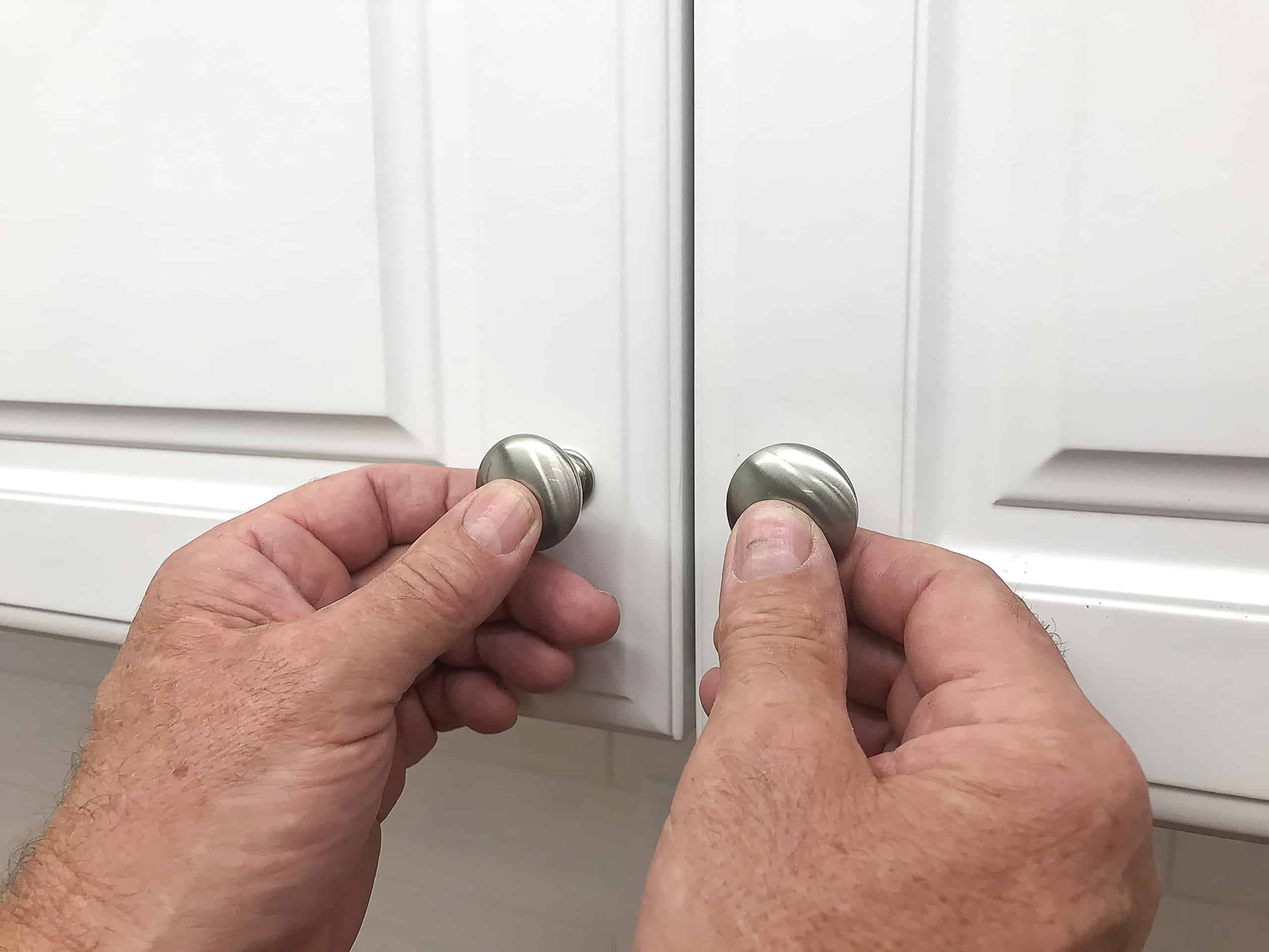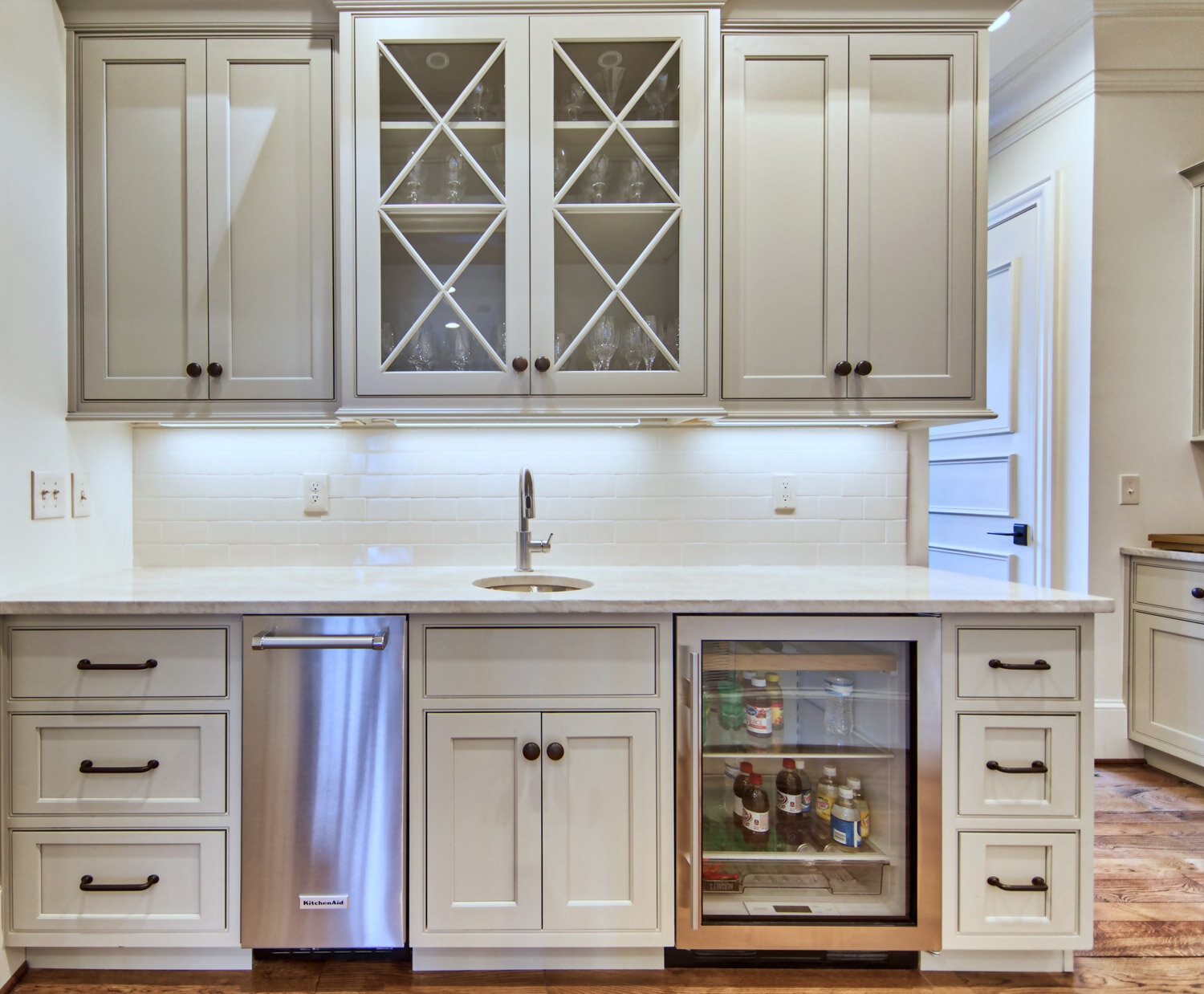Types of Kitchen Cabinet Doors

Choosing the right kitchen cabinet doors is a big deal, especially in Jakarta Selatan where style and quality are paramount. Getting it right can elevate your kitchen from “meh” to “majestic,” so let’s dive into the options. We’ll cover the materials, styles, and help you weigh the pros and cons to find the perfect fit for your space and budget.
Kitchen Cabinet Door Materials
The material you choose significantly impacts the look, durability, and price of your cabinets. Here’s a breakdown of popular choices:
Home hardware kitchen cabinet doors – Wood: Solid wood doors, like teak or mahogany, are the epitome of luxury. They’re incredibly durable, offer a timeless aesthetic, and can be customized with various finishes. However, they come with a hefty price tag and require regular maintenance to prevent warping or damage. Think of the rich, deep tones of a beautifully polished teak cabinet, a statement piece in any modern South Jakarta kitchen.
Laminate: Laminate doors are a popular choice for their affordability and durability. They’re resistant to scratches and moisture, making them practical for busy kitchens. The downside? They might not have the same luxurious feel as wood, and damaged areas can be difficult to repair. Imagine a sleek, minimalist kitchen with crisp white laminate doors – perfect for a contemporary style.
Thermofoil: Thermofoil, or vinyl-wrapped doors, offer a good balance between cost and durability. They’re moisture-resistant and relatively easy to clean. The surface can be textured to mimic wood grain, providing a more upscale look at a lower price point. Picture a warm, inviting kitchen with thermofoil doors in a wood-grain finish, offering a sophisticated look without breaking the bank.
Kitchen Cabinet Door Styles
The style of your cabinet doors drastically affects the overall look and feel of your kitchen. Several popular styles cater to different tastes and design aesthetics.
Shaker: Shaker style doors are characterized by their simple, flat center panel framed by a raised edge. They offer a clean, classic look that suits a variety of kitchen styles, from traditional to contemporary. Think of a timeless, elegant kitchen with Shaker-style doors in a soft, neutral color.
Slab: Slab doors are completely flat, without any raised panels or details. They create a sleek, minimalist look that’s perfect for modern or contemporary kitchens. Visualize a sophisticated, streamlined kitchen with sleek, handleless slab doors in a high-gloss finish.
Raised Panel: Raised panel doors feature a central panel that’s raised above the surrounding frame. This style adds a touch of elegance and sophistication, often seen in traditional or transitional kitchens. Imagine a charming, traditional kitchen with raised panel doors in a rich, dark wood stain.
Inset: Inset doors are mounted inside the cabinet frame, creating a flush, seamless look. This style is considered more sophisticated and often requires more precise installation. Picture a luxurious, high-end kitchen with perfectly fitted inset doors, showcasing impeccable craftsmanship.
Comparison of Kitchen Cabinet Door Styles
| Style | Cost | Durability | Aesthetic Appeal |
|---|---|---|---|
| Shaker | Medium | High | Classic, versatile |
| Slab | Medium-Low to Medium | Medium-High | Modern, minimalist |
| Raised Panel | Medium-High | High | Elegant, traditional |
| Inset | High | High | Sophisticated, seamless |
Home Hardware Kitchen Cabinet Door Installation

So, you’ve got your snazzy new kitchen cabinet doors from Home Hardware, and you’re ready to give your kitchen that *serious* upgrade. Installing them yourself can save you a pretty penny, and it’s way more satisfying than leaving it to someone else. Let’s get this kitchen looking like a million bucks, Jakarta South style!
Necessary Tools and Safety Precautions
Before you even think about touching those pristine new doors, gather your tools. Safety first, darling! A poorly executed installation can lead to chipped doors, damaged cabinets, and even injury. We don’t want any of that drama, right?
- Screwdriver (Phillips and flathead): You’ll need these for various screws and hinges.
- Measuring tape and pencil: Accuracy is key here, my friend.
- Level: Keeps things perfectly aligned. No wonky doors allowed!
- Drill (with appropriate drill bits): For pre-drilling pilot holes (this prevents splitting the wood).
- Safety glasses: Protect those peepers from flying debris.
- Work gloves: Protect your hands from splinters and scratches.
Remember to clear the area around your cabinets to avoid tripping hazards. And always, always wear safety glasses!
Step-by-Step Installation Process
This is where the magic happens. Follow these steps meticulously, and your kitchen will thank you. Think of it as a precise choreography for a stunning kitchen reveal.
- Remove Old Doors: Carefully unscrew the hinges from the old doors and the cabinet frames. Keep the screws organized for reuse (if possible). Take photos if needed.
- Prepare New Doors: Check if any pre-assembly is needed (hinges, handles). If not, carefully align the new hinges to the cabinet frame, using the old hinges as a guide. Mark the locations with a pencil.
- Pre-Drill Pilot Holes: This is crucial! Pre-drilling prevents the wood from splitting when you screw in the hinges. Use a drill bit slightly smaller than the screw diameter.
- Attach Hinges: Securely attach the hinges to both the doors and the cabinet frames using the screws. Double-check that everything is level and aligned using a level.
- Install Handles/Knobs: Once the hinges are in place, install the handles or knobs according to the manufacturer’s instructions. Again, ensure everything is perfectly aligned.
- Adjust and Fine-Tune: After installing all doors, carefully check for any gaps or misalignments. Minor adjustments can be made by slightly loosening and tightening the screws on the hinges.
Common Installation Challenges and Solutions
Even the most experienced DIYer can encounter snags. Here are some common problems and their solutions:
- Problem: Doors don’t align properly.
Solution: Check the hinge placement and adjust screws to fine-tune the alignment. Use a level to ensure everything is straight. - Problem: Door gaps are inconsistent.
Solution: Carefully check the hinge placement and adjust as needed. Sometimes, slight adjustments to the cabinet frame itself might be necessary. - Problem: Screws are stripping.
Solution: Use a slightly larger drill bit to create a pilot hole, or try using a screw with a different thread. - Problem: Difficulty removing old hinges.
Solution: Apply some penetrating oil to loosen the screws. Use a screwdriver that fits the screw head perfectly to avoid stripping.
Remember, patience is key! Take your time, and don’t rush the process. A well-installed cabinet door is a thing of beauty.
Refacing and Repainting Kitchen Cabinet Doors: Home Hardware Kitchen Cabinet Doors

Giving your kitchen a fresh, modern look doesn’t always mean a full renovation – sometimes, a little TLC on your existing cabinet doors works wonders! Refacing and repainting are cost-effective ways to achieve a dramatic transformation, adding serious *kekinian* style to your South Jakarta kitchen. This process lets you keep the existing cabinet boxes, saving you time and money, while updating the look completely.
Surface Preparation for Repainting
Proper prep work is key to a professional-looking finish. Think of it as laying the foundation for a stunning masterpiece. A poorly prepped surface will show through the paint, no matter how good the paint is. We’re talking about achieving that flawless, Instagram-worthy finish.
First, thoroughly clean your cabinet doors with a degreaser to remove any grease, grime, or old finishes. Let them dry completely. Then, lightly sand the surfaces with fine-grit sandpaper (around 220 grit) to create a smooth surface and help the paint adhere better. Pay close attention to any imperfections like scratches or dents; you might need to use wood filler to repair these before sanding. After sanding, wipe down the doors again with a tack cloth to remove any dust. This step is crucial for a smooth, even paint application.
Priming Kitchen Cabinet Doors, Home hardware kitchen cabinet doors
Priming is often overlooked, but it’s a crucial step for a durable and even finish. Primer acts as a bonding agent, improving the adhesion of the paint to the cabinet doors and creating a uniform base. Choose a high-quality primer designed for cabinets and wood surfaces. Apply a thin, even coat, ensuring you cover all areas, including edges and corners. Let it dry completely according to the manufacturer’s instructions before proceeding to the next step. A good primer will prevent the wood grain from showing through and create a smoother surface for the topcoat.
Painting Kitchen Cabinet Doors
Now for the fun part – painting! Choose a paint that’s durable and easy to clean, like semi-gloss or satin. These finishes are ideal for high-traffic areas like kitchens. Use a high-quality brush or roller for a smooth, even application. Apply thin, even coats, allowing each coat to dry completely before applying the next. Two or three coats are usually sufficient for full coverage, depending on the color and the type of paint used. For a truly professional look, consider using a spray gun for a super-smooth finish, but ensure you’re working in a well-ventilated area.
Finishing Touches and Achieving a Professional Look
After the final coat of paint is dry, you can add a clear coat for extra protection and durability. This is especially helpful in high-moisture areas like kitchens. Consider a polyurethane or varnish for added shine and protection against scratches and spills. Remember to allow adequate drying time between coats. To achieve a truly professional finish, pay attention to the details. Use painter’s tape to create crisp lines and protect areas you don’t want to paint. Sand lightly between coats to remove any imperfections, and wipe down with a tack cloth before applying the next coat. Take your time and be patient; a little extra effort will make a huge difference in the final result. Consider using a slightly damp cloth to gently wipe away any dust particles that might have settled on the paint during the drying process before applying the final coat.
Refacing Kitchen Cabinet Doors: A Practical Guide
Forget complicated instructions; let’s make this easy. Refacing means updating the surface of your cabinets without replacing the entire structure. It’s like giving your cabinets a stylish makeover. Start by carefully removing the cabinet doors and drawers. Clean them thoroughly, then sand them smooth. If you’re using pre-made refacing materials like veneer sheets, carefully apply them, ensuring there are no air bubbles. For a painted finish, follow the priming and painting steps Artikeld above. Reinstall the doors and drawers, and voila! A stunning new kitchen without the hefty price tag of a full replacement.
